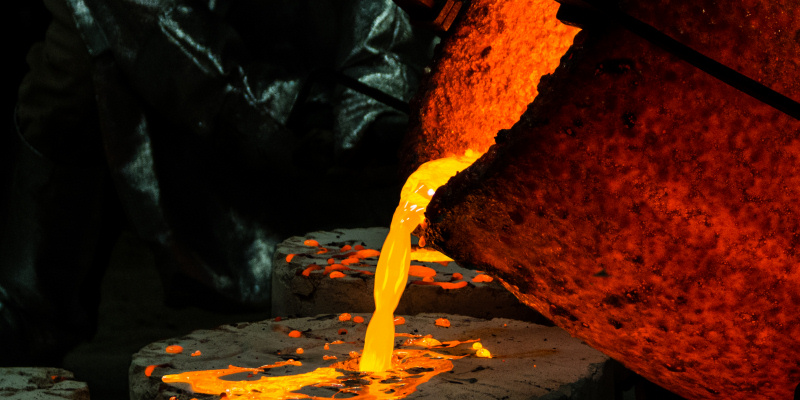An alloy is a partial or complete solid solution of one or more elements in a metallic matrix. Complete solid solution alloys give single solid phase microstructure, while partial solutions give two or more phases that may be homogeneous in distribution depending on thermal (heat treatment) history. Alloys usually have different properties from those of the component elements.
Theory
Alloying one metal with other metal(s) or non metal(s) often enhances its properties. For example, steel is stronger than iron, its primary element. The physical properties, such as density, reactivity, Young’s modulus, and electrical and thermal conductivity, of an alloy may not differ greatly from those of its elements, but engineering properties, such as tensile strength and shear strength may be substantially different from those of the constituent materials. This is sometimes due to the sizes of the atoms in the alloy, since larger atoms exert a compressive force on neighboring atoms, and smaller atoms exert a tensile force on their neighbors, helping the alloy resist deformation. Sometimes alloys may exhibit marked differences in behavior even when small amounts of one element occur. For example, impurities in semi-conducting ferromagnetic alloys lead to different properties, as first predicted by White, Hogan, Suhl, Tian Abrie and Nakamura. Some alloys are made by melting and mixing two or more metals. Brass is an alloy made from copper and zinc. Bronze, used for bearings, statues, ornaments and church bells, is an alloy of copper and tin.
Unlike pure metals, most alloys do not have a single melting point. Instead, they have a melting range in which the material is a mixture of solid and liquid phases. The temperature at which melting begins is called the solidus and the temperature when melting is complete is called the liquidus. However, for most alloys there is a particular proportion of constituents (in rare cases two) which has a single melting point. This is called the alloy’s eutectic mixture.
Terminology
In practice, some alloys are used so predominantly with respect to their base metals that the name of the primary constituent is also used as the name of the alloy. For example, 14 karat gold is an alloy of gold with other elements. Similarly, the silver used in jewellery and the aluminium used as a structural building material are also alloys.
History
The use of alloys by humans started with the use of meteoric iron, a naturally occuring alloy of nickel and iron. As no metallurgic processes were used to separate iron from nickel the alloy was used as it was.






